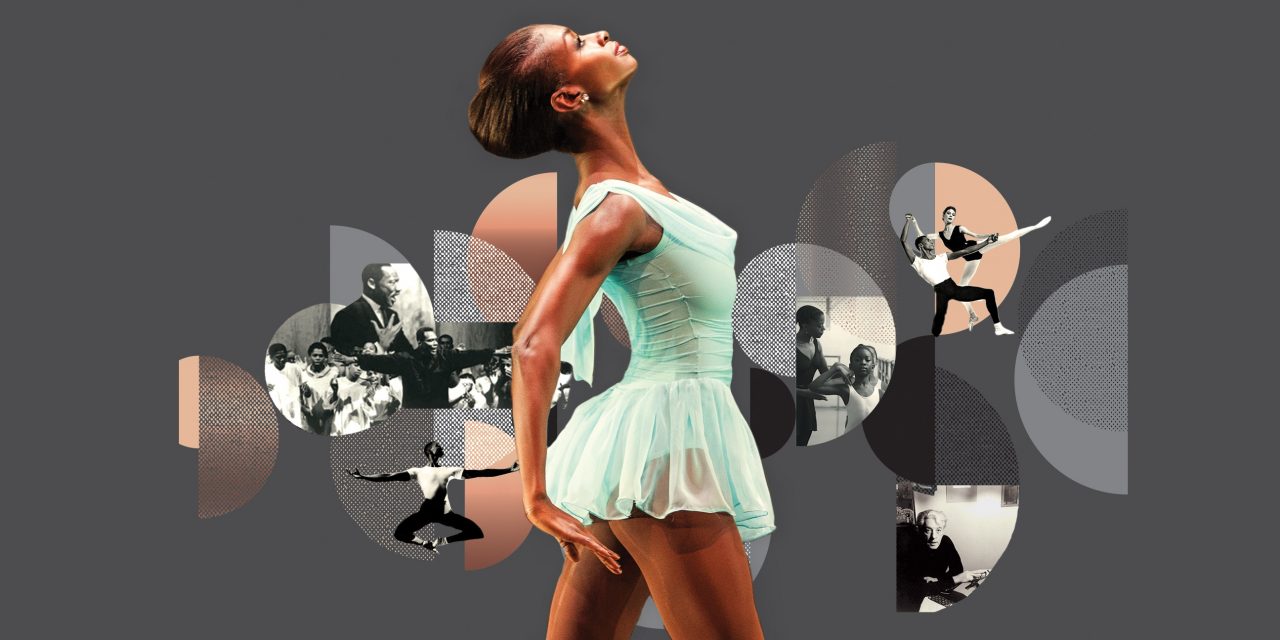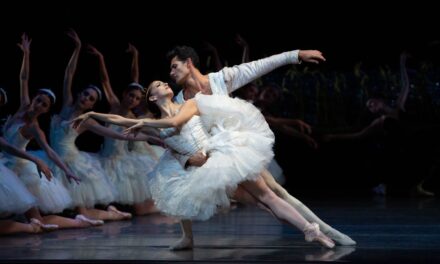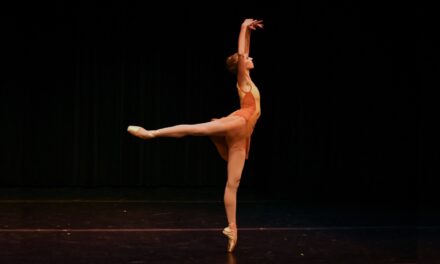This article was originally slated as a straight forward review of Judy Tyrus and Paul Novosel’s sumptuous new book, Dance Theatre of Harlem, A History, A Movement, A Celebration, chronicling the history of the company. I will start as planned, with a short review. The book is glorious, meticulously laid out like a museum exhibition. It is divided into three main parts: the first focuses on founders Arthur Mitchell and Karel Shook and the birth of the school. The second focuses on the triumphant period between 1968 and 2004. The final section chronicles the re-emergence of the company after the long hiatus, which began in 2005. Many chapters start with a bulleted list of important cultural touchstones, setting the stage for what is to come. Each chapter then highlights the visionary artists, the creative work and the historical significance of each era of the company’s existence. The book is lush with photos and is meticulously researched. In addition to the physical book, there is an even larger data base on the ChromaDiverse Website. This is groundbreaking work documenting, in exquisite detail, a company that should be recognized as one of the most influential and aspirational arts institutions in the world.
- Judy Tyrus – Photo by Steven Brandstetter
- Paul Novosel – Photo by Patrick Loy
I highly recommend the book. It is a gift to balletomanes and to students; of dance, of history, of social science, and of civil rights. The biographies of Arthur Mitchell and Karel Shook are lovingly rendered and highlight the symbiotic relationship between the visionary Mitchell and the artistic yet intellectual Shook. Other collaborative artists have their own individual biographies, including Dorothy Maynor, with whom Mitchell first founded the school, costumer Zelda Wynn, dancer and choreographer Geoffrey Holder, and current artistic director and former principal ballerina, Virginia Johnson.The evolution of the company style is laid out, starting with classical and Balanchine neoclassical and expanding to each of the seven ballet categories that DTH dances; both the Balanchine and Ballet Russe Traditions, Black Heritage, Contemporary Fusion, Bravura, Modernist revival and Dance Drama. It is then broken down further, in sections based upon the era, with features on the choreographers and dance masters and the performing artists. Each section is then placed within the larger societal context. For example, the incredible relationship between Frederic Franklin, Alexandra Danilova, and the company, is illustrated in a charming chapter which seems to mirror the subjects themselves. These ballets, particularly Giselle and Firebird, part of the Ballet Russe tradition, became company staples.Their classical choreography was set in different settings (a Creole Giselle and a tropical Firebird), hallmarks of the company’s devotion to both classicism and diversity.
The book is celebratory, but does not shy away from the serious issues, though it treats them lightly. Some parameters are laid out in the introduction. The terms “Black” or “White” are not used unless attributed to a direct quote. They use “cultural bias” rather than variations on race or racism. To quote from the introduction:
This mirrors DTH’s pursuit of cultural equality. The struggle endured by ballet dancers because of skin tone is a story of the pursuit of civil rights in the United States. Our aspiration, in telling this great story, is to shift the mindset away from skin tone and generalizing to valuing and respecting each person’s, and each dancer’s, heritage, culture, and talent.
Other important and potentially divisive issues are also touched upon lightly, but without blinders; body shaming, coaching techniques that were once the norm and are now (rightly) considered abusive, and the struggles of the company as it grew, then faltered then rose again, all are considered within the broader celebration of an iconic institution. The transfer of leadership and challenges with a new generation are discussed with respect and admiration for the tenacity of the company to make it through difficult times, particularly the last several years. An all female leadership team is noted and celebrated. Those serious issues are balanced with tantalizing insider touches; details on wardrobe rules (dancers were required to look sharp at all times and there were dress code categories while on tour), offhand comments about particular ballets; for instance, Balanchine’s ballet Square Dance is described as “hard as hell,” and details as intimate as the reason that Mr. Mitchell had the nickname “eagle eye,” which was a combination of his exacting attention to detail in the studio and the misidentification of the silver phoenix bracelet that he wore.
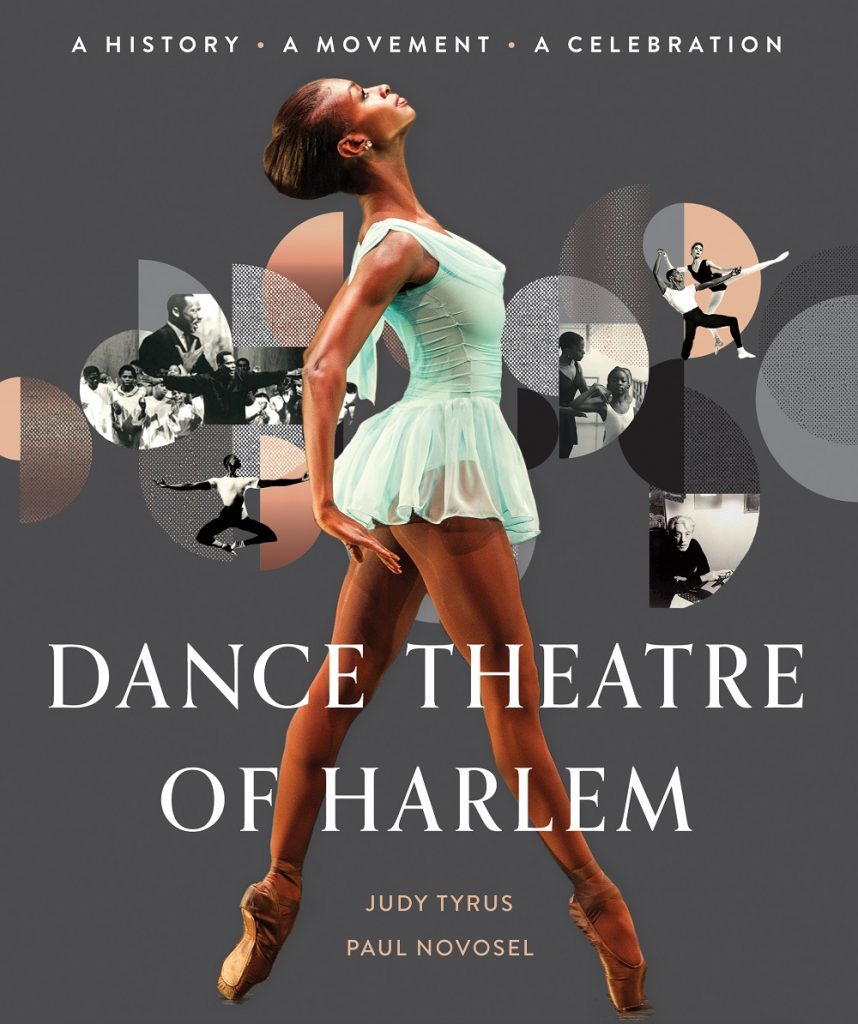
Cover of the book “Dance Theatre of Harlem – S History – A Movement – A Celebration – courtesy of Chromadiverse
There is a reason that the reader feels so deeply immersed in the company, which leads to the second half of this article. Author Judy Tyrus joined Dance Theatre of Harlem at the age of sixteen and danced as a principal dancer with the company for twenty-two years. There is much inspiration to be found in her stellar unconventional career. She seamlessly moved from dancer to archivist and dance professor to author and historian. I interviewed Ms.Tyrus the day before she flew to the iconic Jacob’s Pillow Dance Festival to serve as Scholar in Residence for Alonzo King’s Lines Ballet. We discussed her life journey to date and her current project, The Oakland Ballet Company Legacy Project.
Ms. Tyrus is a stunning, vivacious woman, genuinely in love with her life, her place in history and her ongoing mission. She was born in Oakland, California and joined Oakland Ballet under the direction of Ronn Guidi at the age of thirteen. She had her sights set on Dance Theatre of Harlem after seeing them perform at Zellerbach Hall in Berkeley.
That was sort of an eye opening, oh my god experience like, these people look like me, you know, and they’re doing this thing, this great thing on stage, classical ballet, you know. How fabulous is that? And that was, it was just this spark that I needed to get me to New York, you know, because I really wanted to be with the company.
When she was sixteen, the company was in San Francisco. She knocked on the Geary Theatre stage door, asked to take company class and found herself in New York a week later, a new apprentice dancer for the company. She never looked back.
Ms.Tyrus had a major ballet career. As a principal with DTH she danced the entire repertoire. Like most DTH principals she also appeared as a guest artist throughout her career with companies including The Royal Ballet, New Jersey Ballet, Birmingham Royal Ballet, and notably, Oakland Ballet, over and over. A small sampling of her reviews reveals a dancer of impressive technique, serious acting ability, and an appealing stage presence. For example, The New York Times said of her 1987 debut as the Firebird:
The most impressive of these performances was that of Judy Tyrus, who took over the title role of John Taras’s ”Firebird.” Miss Tyrus’s Firebird was a fierce, wild creature. Her feet stabbed at the floor, her fingers tore at the air, and the tremblings of her arms when she was captured by Joseph Cipolla were defiant struggles to break loose.
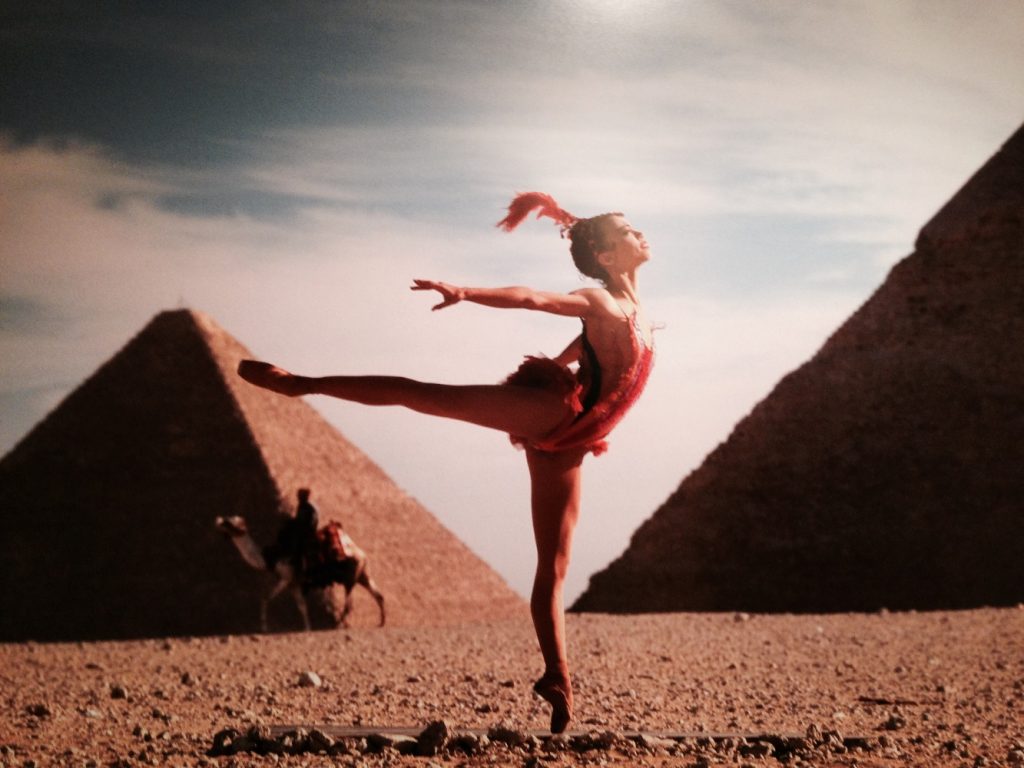
Firebird – Photo by Dwight Carter
A 1989 Giselle review, also in the Times, is equally laudatory.
Miss Tyrus has a lovely quality to her dancing, and her Giselle was youthfully innocent in Act I and full of mercy in Act II. Her mad scene was conventional and well done, contrasting with her sparkling solo and openly confident hops on toe.
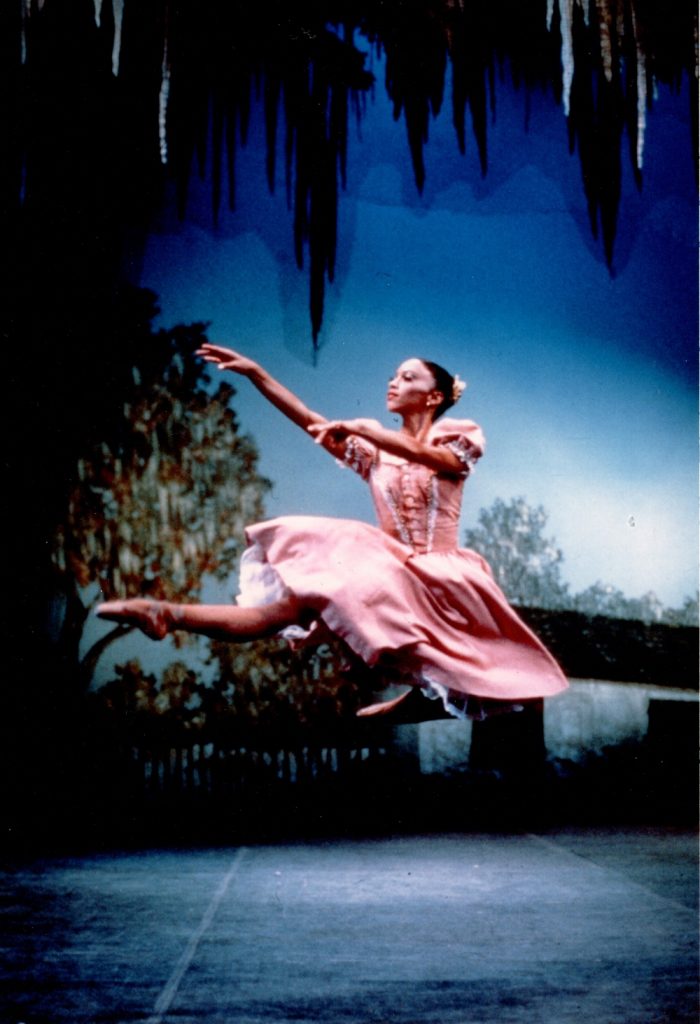
Giselle Peasant Pas – Photo by Jack Mitchell
Ms. Tyrus created history in other ways. For instance, she had two children while she was with the company, contributing to the change in the way that the ballet world views motherhood. While mothers in companies have started to be celebrated, this was not the case just a few years ago. It is still incredibly difficult.
I was the first person at Dance Theatre to receive maternity leave. And you know, Arthur Mitchell, I think he didn’t realize how important it was to allow that, how it was really history making. And then he insisted that I come back! He gave me opening night at Kennedy Center after both of my babies to do Firebird. Opening night after both of my children were born.
Becoming a ballerina mother was not the first unconventional thing that Ms.Tyrus has undertaken. Moving from a ballerina role in the company to an archivist is not a regular career path. Most dancers who stay in the industry become teachers and coaches or fitness instructors. Indeed, Ms.Tyrus did do that as well.
I was an adjunct professor at Marymount Manhattan College from 2000 to 2015. Other than teaching ballet class at the college level, as a certified Pilates instructor, I created a class that incorporated Pilates, ballet, and yoga with somatics, emphasizing healthy stretching and strength building.
However, as she herself states, she has not had a conventional life and she has also had people around her to recognize her talents.
None of my life has been conventional, you know, I’ve gone from one thing to the next to the next, just on my experience. Having been with the company for so long, I realized that becoming the archivist was a great thing! I knew so much already; I knew the people in the photographs, (Indeed, she is credited as a photographer throughout) I knew much of the history, so I just sort of…Arthur Mtichell asked me to curate an exhibit. When he asked me the question he said, “Would you curate this exhibit for our 40th anniversary?” (for the New York Public Library), I said, “Sure! What does curate mean?”
She laughs.
It was one of those things where he put me in the position, made sense of the ask and I had to do it!
So I rolled from being dancer, being a mother, and then an archivist. Doing all of that work and traveling with an exhibition for nine years and seeing all of the impact of that and then feeling at the end of all that, oh my god, there is no book about this company and ballet books are being written and we (diverse dancers) are not being included.
It would seem that this career shift would require higher education, however Ms. Tyrus did not go back to school (aside from the Pilates certification). However, she never stopped learning and it has served her well. She followed a tradition of apprenticeship to become an expert in her new field, just like she had as a dancer.
I always had the most incredible people around me to teach me. So when Arthur Mitchell asked me to create, to curate, the exhibit for the New York Public Library, I had the top notch curators in the country helping me, showing me; this is how you do it, this is what you need to do, this is what you need to find out.’ This is how you preserve something, this is how you present it, this is how you create the content for it.
She credits Mr. Mitchell again as a mentor and guide:
It was Arthur Mitchell who said, ‘Get the best people around you to teach you what you need to know. And you’ll be fine.” And that’s how he did it, you know, that’s how he created Dance Theatre of Harlem. He always had the best people who would talk to him. He would ask them questions. So that’s basically how I’ve traveled through my life.
Ms. Tyrus’ archival projects for Dance Theatre of Harlem led her and her writing partner Paul Novosel to write the book and in 2019, to cofound the nonprofit ChromaDiverse, Inc. The company works with diverse dance organizations, many of which lack financial resources or archival knowledge. It provides digital archives management services at low cost and offers a flexible Cloud-based “Digital Vault” with a scalable taxonomy for performing arts content.
In 2021 she was awarded the Diversity Award by the Society of American Archivists (SAA). The award recognizes outstanding contributions in advancing diversity within the archives profession, SAA, or the archival record.
Because the company’s mission statement is to promote diversity in the performing arts, and as previously mentioned, the book treads lightly on certain topics, I asked Ms. Tyrus directly about what could appear to be a slight disconnect.
There were areas of human behavior that Paul and I chose not to expound upon in our book, such as specific artist’s sexual identity or personality traits and demeanor that we or others found indelicate. We surfaced topics of multiculturality, colorism, and contemporary social/cultural issues and the like only if the topic was called for by the DTH history. Some important parameters and boundaries are covered in the introduction. It is important to note that our book was the impetus to found ChromaDiverse which takes action on some of these topics, such as doing something about dance companies archives to prevent erasure and preserve legacy. Our book has also spawned new narratives and questions with regard to the direction of ballet in America. And if our book provokes more questions, that’s a wonderful thing and the book is doing its job.
The Oakland Ballet Legacy Project brings Ms. Tyrus home in a way. She stayed connected to the company throughout her career with Dance Theatre of Harlem. Founder and long time artistic director Ronn Guidi was supportive throughout; seeing her performances on tour and often inviting her to guest with the company. Returning to work with the company is a full circle moment.
When you have a long career with these major ballet companies, you want to give back to them. And so having the opportunity or, or, or creating this opportunity for Oakland ballet and Chroma diverse to work together. It’s just been phenomenal, really has been phenomenal.
Ms. Tyrus had already been in discussions with Mr. Guidi prior to his passing about Oakland Ballet’s archives and the need to preserve, protect and present it; to researchers, students and the general public. When she moved back to the Bay Area to care for her mother, she “realized there was all this work I could do.” That led to the founding of the company and this current behemoth job. The Oakland Ballet Company Legacy Project is a collaboration between three entities; The Ronn Guidi Foundation for Dance, Oakland Ballet Company, and ChromaDiverse .
As time goes on, there are numerous other companies that Ms. Tyrus is itching to work with. She sees the future and it is in the integration of technology and the ballet world.
I’d like you to understand, we really want technology to help with this preservation process. We have fully entered the digital world now, you know. COVID has made us digital people. So without a digital presence, without access to your historic record digitally, you are not there. You’re just not there. And so that is what we want to do. Help companies get to that point. It’s also just to be able to tell their story. I think preservation is one aspect. Having access for marketing and fundraising is another aspect. But being able to tell your full story, that’s you know, that’s really important.
Judy Tyrus is an astonishing person; an artist, activist, archivist, writer, mother, and ballerina. She is an inspiration to dancers, living each phase of her life to the fullest, and constantly giving back. The dance world is lucky to have her.
I had no idea that my life would end up this way, you know, that I would end up sort of being a writer and an archivist, you know, I had no idea.
|- – -|
Featured Image: From the cover for the book “Dance Theatre of Harlem, A History, A Movement, A Celebration”, courtesy of ChromaDiverse

